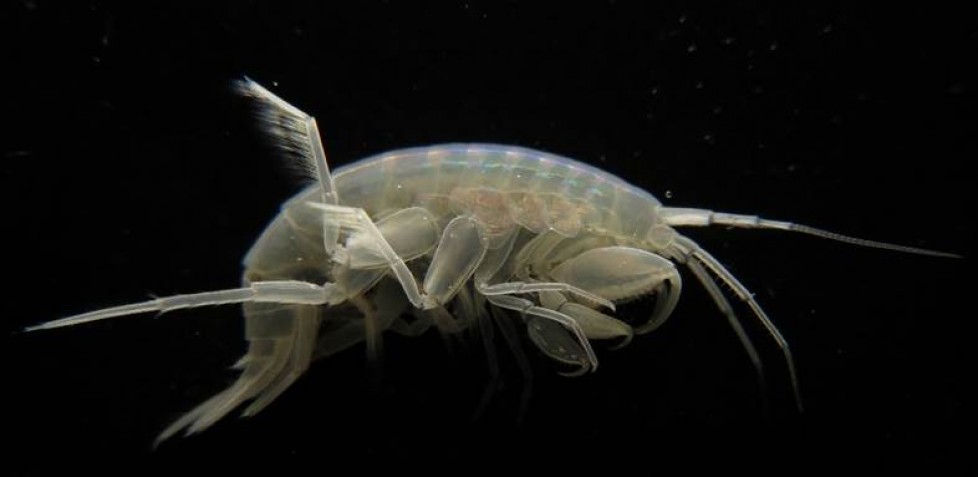Dissemination

AMPHIPODS IN BRAZILIAN CAVES
Amphipods comprise an order of the sub-phylum Crustacea that conquered the marine, freshwater and terrestrial environments. Approximately 8000 species are known, but many new species have been described. The aquatics are popularly known as “shrimps”, or “pitus” for freshwater shrimps in Brazil, and the terrestrials are called sea-flea or sand-flea. In general the organisms may present from 1 mm to 25 cm and are characterized by the absence of carapace, body laterally flattened, seven pairs of thoracic appendages, the first and the second being sub-chelated (called gnathopods). They may live adhered to the aquatic vegetation or associated to the substrate in general, and the terrestrials are found in the sacking and shoals. They have limited dispersion abilities and the only records of freshwater amphipods for long distances refer to their transport adhered to waterfowl feathers. Thus, the distribution of most of species is more restrict, with many cases of endemism which are found on only one place or region.
There are species living in the subterranean environment which present morphological, physiological and behavioral adaptations that allows them to live in such habitats where the absence of light and the poor availability of food resources predominate. Thus, the cave amphipods generally do not have nor pigmented body neither eyes (when present, are vestigial), besides elongated appendages, especially antennae and legs. The diversity of such amphipods is expressive in the whole world, however in Brazil there are few studies about them. Until the present there are four genera recorded for the country, which belong to three different families: Spelaeogammarus and Megagidiella (family Artesiidae), Potiberaba (family Mesogammaridae) and Hyalella (family Hyalellidae). While the three first are strictly cave dwelling, Hyalella also may be found in surface waters and in the transition between the subterranean and the surface aquatic habitats.
There is much to be done in relation to the knowledge about amphipods in Brazil, especially regarding the cave ones. The CEBS has contributed in this sense through a research line on taxonomy and ecology of this group.


